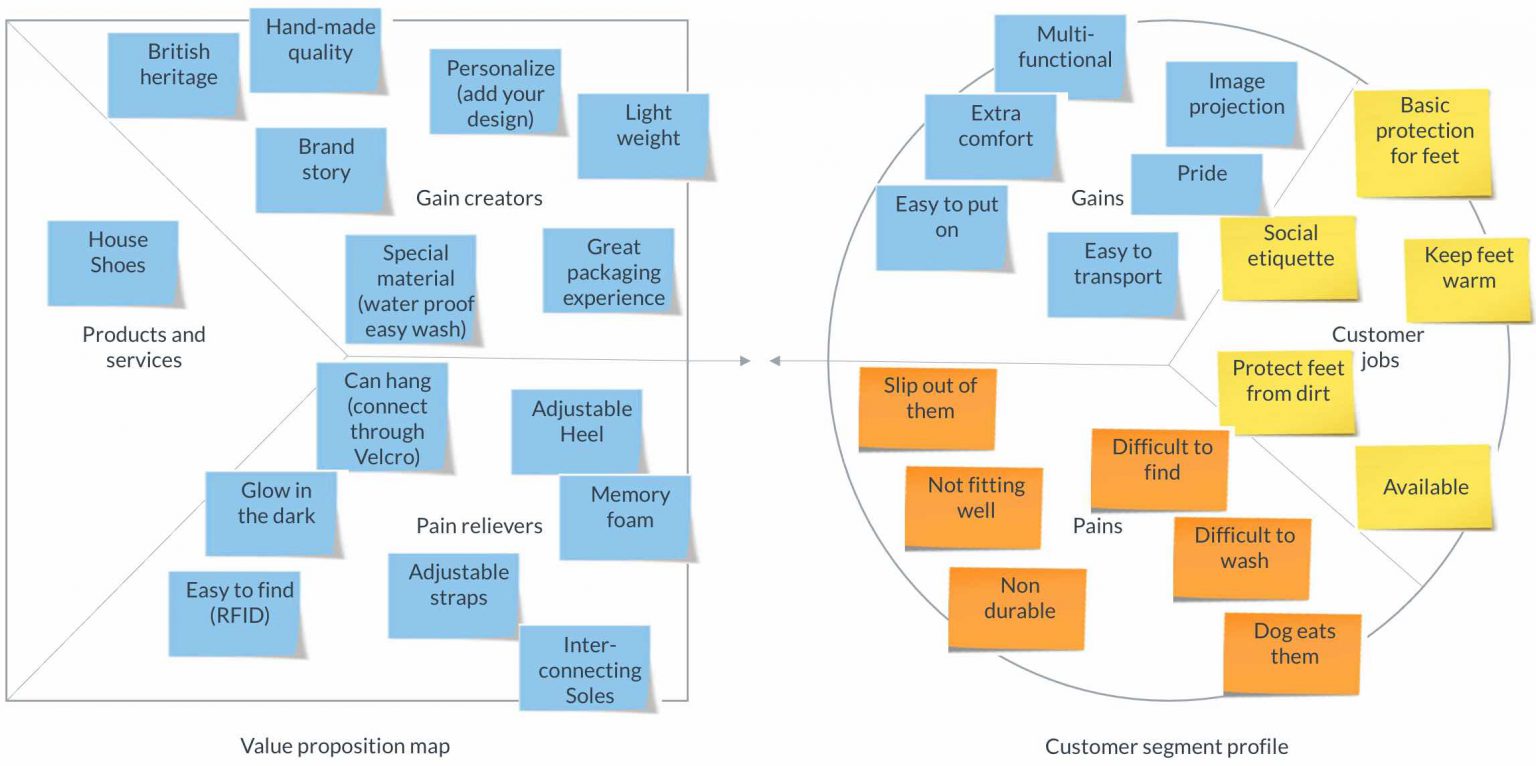The Value Proposition Canvas is a tool which can help ensuring that a product or service is positioned around what the customer values and needs. Developed by Strategyzer, the tool can be used when there is a need to refine an existing product or service offering, or where a new offering is being developed from scratch.
In this article we will deepen our understanding of customer needs and how we can adapt the value proposition to meet these needs, as a stand-alone exercise or part of a design thinking process.
The idea is to start understanding the profile and needs of customers (the circle on the right), grouped into “customer jobs”, “pain” and “gains”. Do this first as a workshop exercise with your project team, then validate these assumptions through customer interviews.
Definitions
Customer jobs describe the things your customers are trying to get done (or “jobs-to-be-done”). A customer job could be the tasks they are trying to perform, the problems they are trying to solve, or the needs they are trying to satisfy.
Customer pains describe anything that annoys your customers before, during, and after trying to get a job done, or simply prevents them from getting a job done. Pains also describe risks (potential bad outcomes) related to getting a job done badly or not at all.
Gains describe the outcomes and benefits your customers want. Some gains are expected or desired by customers, while thers would surprise them. They could include functional utility, social gains, positive emotions, and cost savings.
You could start this during a value proposition canvas workshop with your innovation project team. The insights coming from your team could be captured via sticky notes (post-its) in the circle – to the right side of the tool. Then move towards the left-hand side – the square – and start mapping how features from your current offering (value proposition) satisfy customer jobs, solve pains and create gains. Then imagine your future product or service – and how it could better satisfy customer jobs, solve pains or create gains.
Pain relievers describe how exactly your products and services alleviate specific customer pains. They explicitly outline how you intend to eliminate or reduce some of the things that annoy your customers before, during, or after they are trying to complete a job or that prevent them from doing so.
Gain creators describe how your products and services create customer gains. They explicitly outline how you intend to produce outcomes and benefits that your customer expects, desires, or would be surprised by, including functional utility, social gains, positive emotions, and cost savings.
Example of applying the Value Proposition Canvas
Let’s take the example of a company that wants to create and launch a premium brand slippers on the market.
The innovation team has identified the following jobs that customers will be satisfied with: to protect the feet, to keep warm and to protect from dirt (see figure below). The problems identified during the workshop – and confirmed by interviews – were: slipping out of them, can be difficult to find, are not durable and do not fit well. Potential gains would be: multifunctional, easy to carry, easy to wear, extra comfort, multifunctional.

After understanding the customer needs, the company integrated a series of factors to remedy the most acute pains of customers and produce gains, thus creating value for them. The compelling reason to buy justified a premium price that the target customer group was willing to pay.
Remember that all the insights created during the workshop and discussions come from your internal team! Validate your assumptions before going to market!
Following your value proposition canvas exercise, you need to validate all your assumptions through different experimentation techniques: customer interviews, fieldwork observations etc. The closer you are to developing a prototype, you need to start employing experiments with higher evidence strength. More about experiments, integration in a business model and go-to-market in a future article. Stay in touch!
Newsletter
Subscribe our newsletter to get our latest update & news

